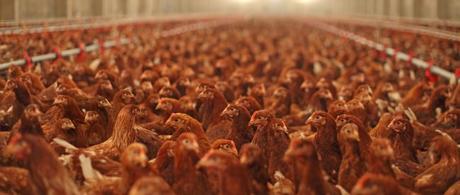
With #avianflu looming its gloomy head over the start to 2018, what can YOU do as poultry farmers to reduce your potential exposure to this destructive disease. Forgive us if you already have these in place.... We just want make sure as many people are informed as possible.
All poultry keepers should:
- minimise movement in and out of bird enclosures
- clean footwear before and after visiting birds, using a Government approved disinfectant at entrances and exits
- clean and disinfect vehicles and equipment that have come into contact with poultry
- keep areas where birds live clean and tidy, and regularly disinfect hard surfaces such as paths and walkways
- humanely control rats and mice
- place birds' food and water in fully enclosed areas protected from wild birds, and remove any spilled feed regularly
- keep birds separate from wildlife and wild waterfowl by putting suitable fencing around outdoor areas they access
- keep a close watch on birds for any signs of disease and report any very sick birds or unexplained deaths to your vet
- Do not keep fallen stock for any extended periods - ideally dispose of them same day.
- incinerate any dead or fallen stock on-site
Inciner8 have vast experience in the control of diseases using incinerators. We have been heavily involved in these projects around the globe and provide our knowledge and advice to our customers.
Will an Incinerator Kill Bird Flu?
Ensuring the disease is totally destroyed requires any infected waste to be incinerated at at least 850°C for 2 seconds or more (in the UK this is the DEFRA guidelines). To eradicate infection fully, you must be extremely thorough and carry out your bio-hazard reduction programme to the letter. Any slight deviation could result in re-infection. In 2014 alone the estimated cost of bird flu to the poultry industry was over£50 million.
Poultry farms with a high level of hygiene and waste management find avian flu infections occur less frequently.
There are many subtypes of avian influenza viruses, but only some strains of five subtypes have been known to infect humans: H5N1, H7N3, H7N7, H7N9, and H9N2.
Influenza A virus subtype H7N9 is a novel avian influenza virus first reported to have infected humans in 2013 in China. Most of the reported cases of human infection have resulted in severe respiratory illness. In the month following the report of the first case, more than 100 people had been infected, an unusually high rate for a new infection; a fifth of those patients had died, a fifth had recovered, and the rest remained critically ill. The World Health Organization (WHO) has identified H7N9 as "...an unusually dangerous virus for humans." As of June 30, 133 cases have been reported, resulting in the deaths of 43.

